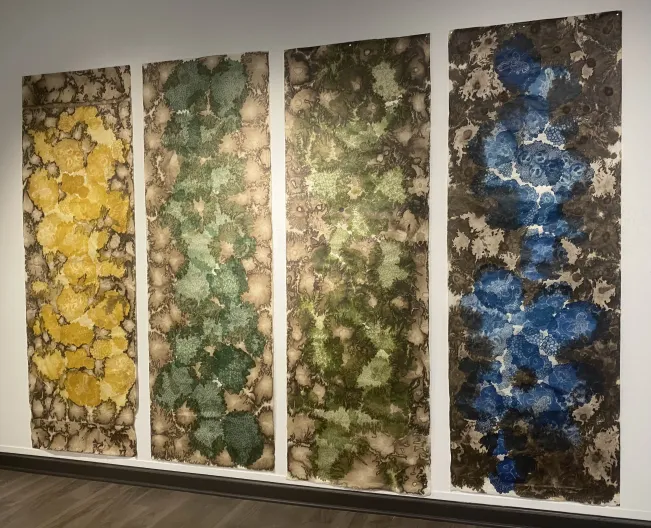CLEVELAND, Miss.—Slavator’s work explores the symbiotic relationship between natural materials, incorporating organic elements such as kozo paper and walnut ink.
Slavator, an associate professor at Western Kentucky University, holds a Bachelor of Fine Arts from Illinois State University and a Master of Fine Arts from the University of New Mexico.
Slavator’s art has been featured in more than 30 solo exhibitions and over 140 group exhibitions across North America, Europe, Asia and New Zealand. Her pieces are part of several public collections, including the Smithsonian Institution, Jingdezhen Ceramic Institute in China, and Sakima Art Museum in Okinawa, Japan.
Slavator’s work is currently on display at Delta State University’s art gallery. She gave a presentation on Jan. 23 about her artistic process and inspirations.
“I’m interested in the thematic parallel of resilience, identity, and transformation. This intuitive flow honors my connection with nature and reinforces the depth of my work, making each piece an expression of collaboration between myself and my environment,” Slavator said.
Her first installation examined the rarity of rainfall in New Mexico. She documented the phenomenon by placing kozo paper outdoors and weighing it down with plant materials during rainstorms. The water stained the paper with organic shapes, resembling cancer cells—an ongoing theme in her work that explores the beauty and destruction of living organisms.
Her art serves as an exploration of the natural world through a microbiological lens, seeking structural commonalities between invasive plant species and diseases in the human body.
Slavator’s exhibit at Delta State University invites viewers to reflect on the delicate balance between human and environmental existence, offering both a visual experience and a thought-provoking commentary on the interconnectedness of life.



